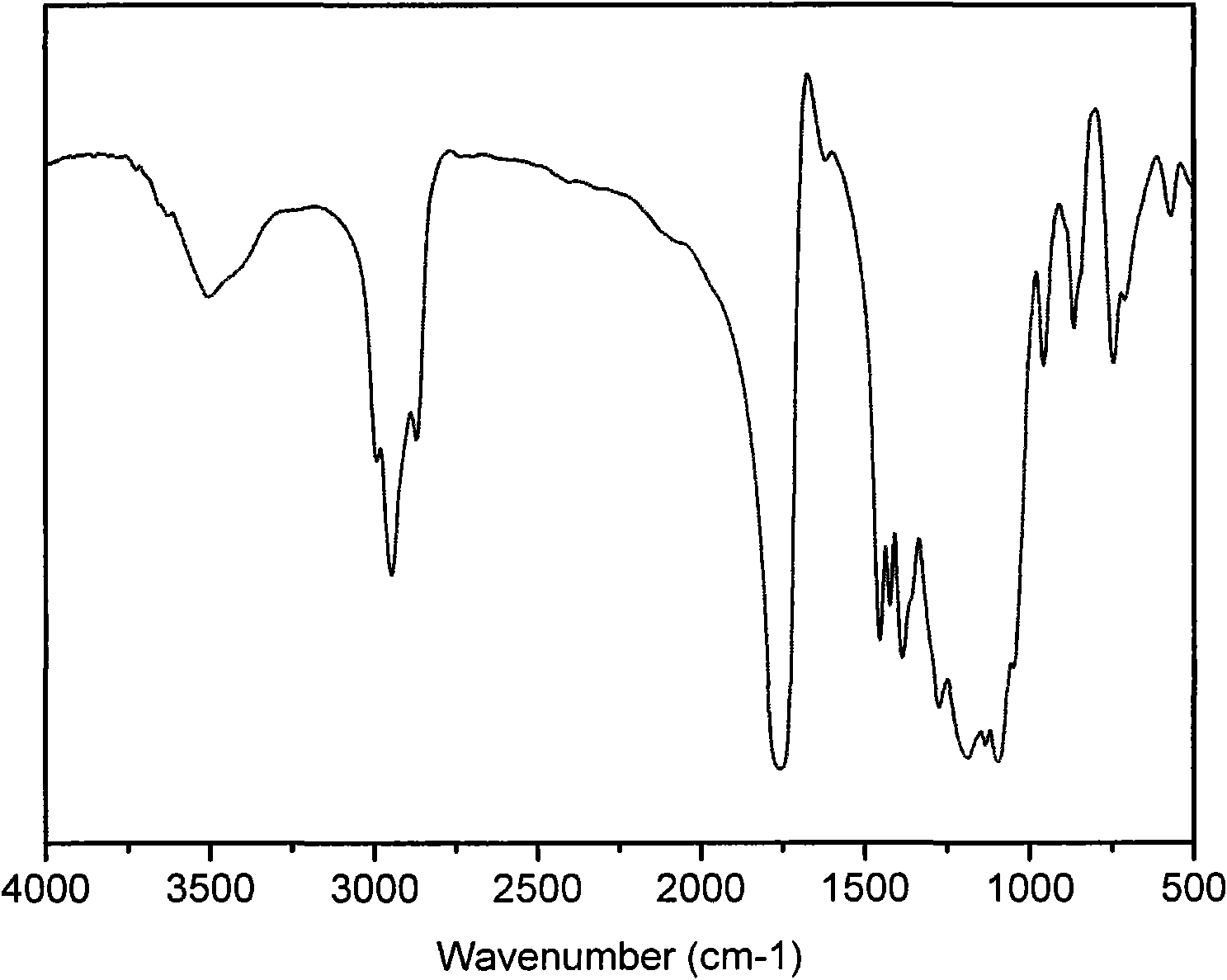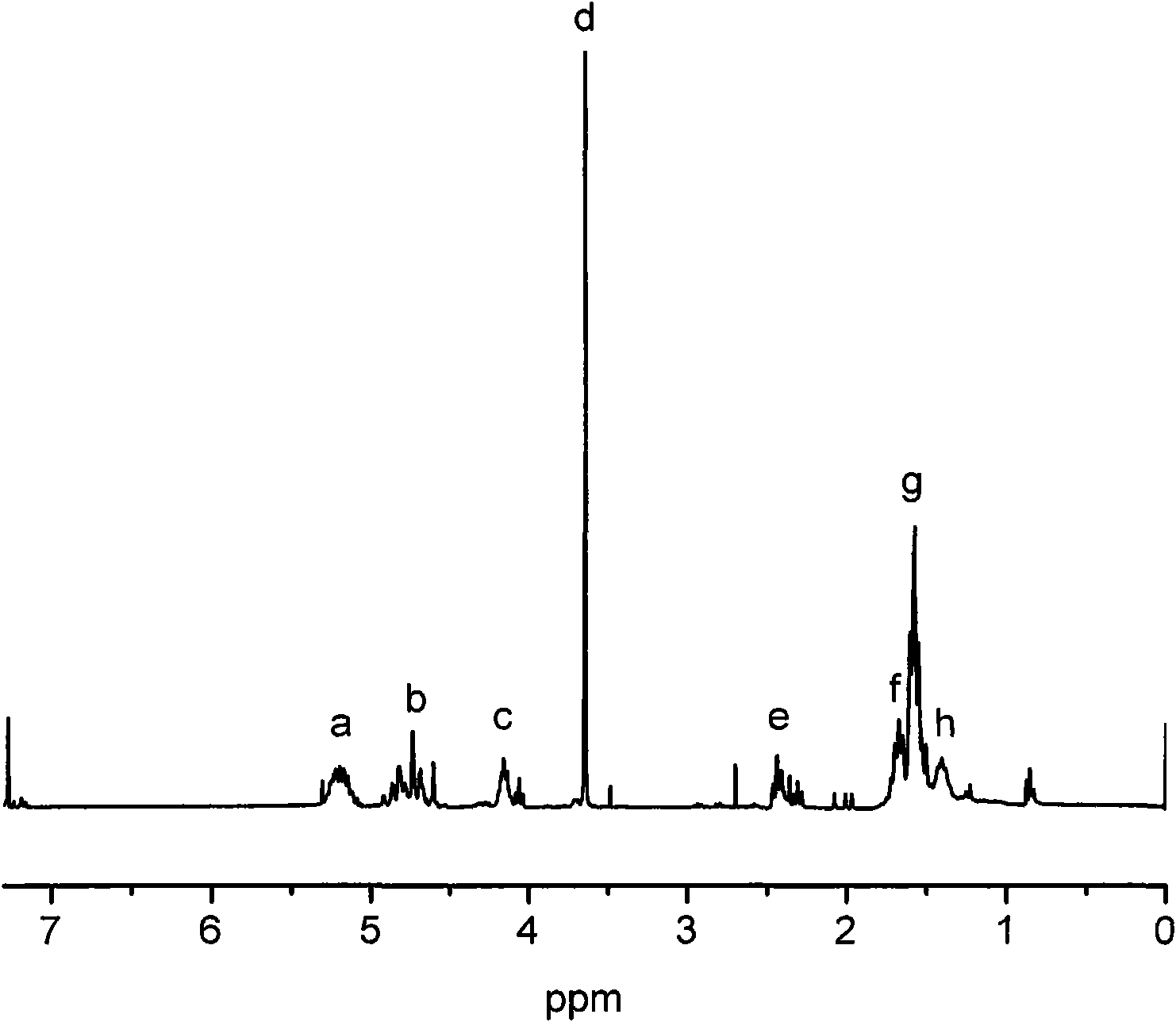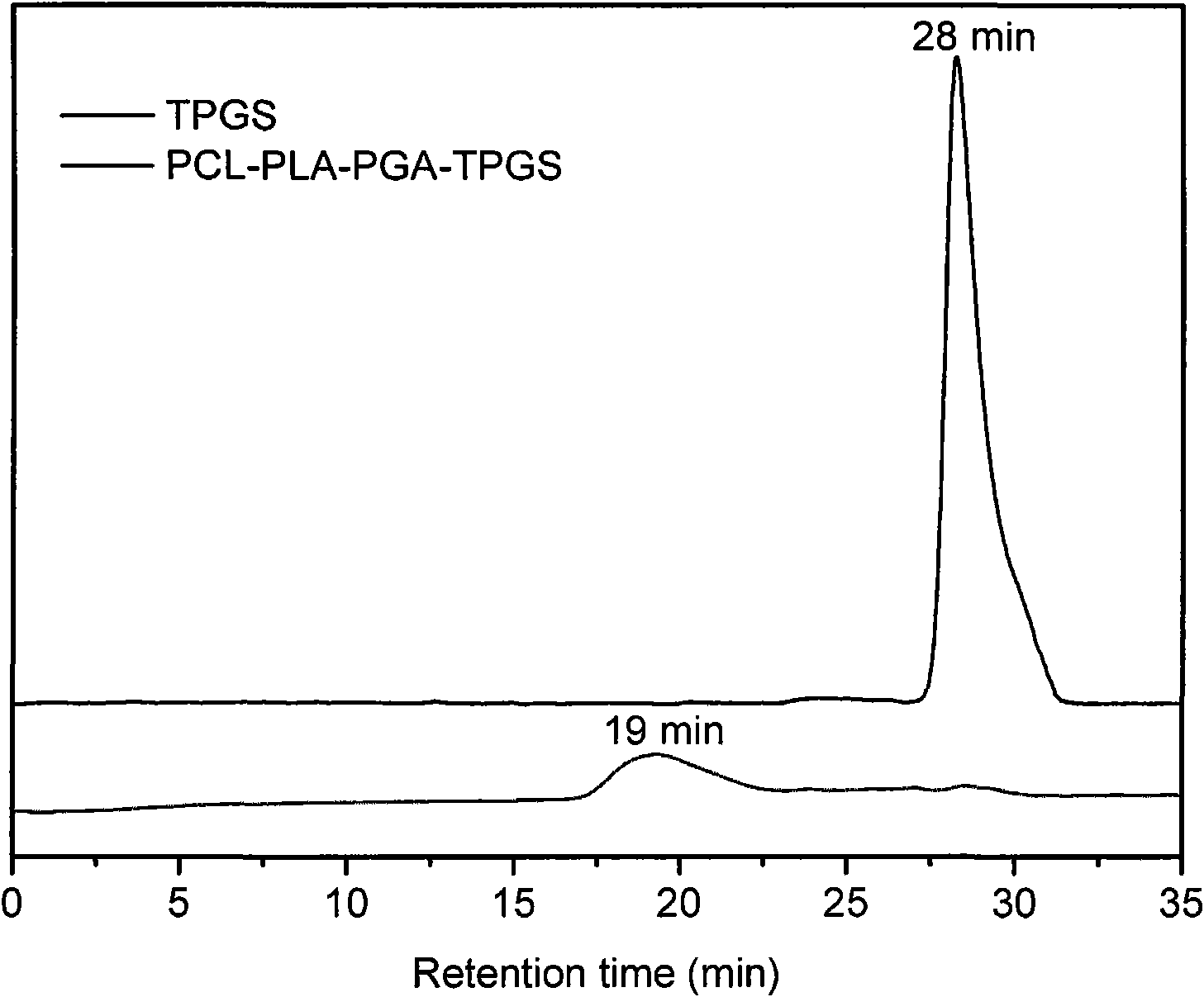Segmented copolymer modified by polyethylene glycol 1000 vitamin E succinic acid ester, preparation method and applications thereof
A technology of polyethylene glycol and succinate, which is applied in the field of biomedical materials, can solve the problems of difficult operation of pharmaceutical preparations, low mechanical strength, and difficulty in bending, and achieve a wide range of biomedical applications. The method is simple and fast, and biodegradation is improved. speed effect
- Summary
- Abstract
- Description
- Claims
- Application Information
AI Technical Summary
Problems solved by technology
Method used
Image
Examples
Embodiment 1
[0029] CL, LA, GA, and TPGS were added to a 100-ml round-bottom flask with two necks in a mass ratio of 4:2:2:2 (10 g in total), and 5 ml of toluene was added. Add 50 mg of stannous octoate (the amount of stannous octoate is 0.5% of the total mass of CL, LA, GA and TPGS) into the flask with a micropipette. The resulting mixture was stirred and reacted at 145° C. for 16 hours under the protection of dry nitrogen. The obtained polymer was dissolved in dichloromethane, and cold methanol was added thereto and stirred to induce precipitation of the polymer. The precipitated polymer was dried at room temperature for 48 hours to obtain a caprolactone-lactic acid-glycolic acid block copolymer modified with polyethylene glycol 1000 vitamin E succinate.
[0030] Take the polyethylene glycol 1000 vitamin E succinate-modified caprolactone-lactic acid-glycolic acid block copolymer and mix it with potassium bromide and press it into tablets (the mass ratio of copolymer to potassium bromide...
PUM
| Property | Measurement | Unit |
|---|---|---|
| particle size | aaaaa | aaaaa |
| particle size | aaaaa | aaaaa |
Abstract
Description
Claims
Application Information
 Login to View More
Login to View More - R&D
- Intellectual Property
- Life Sciences
- Materials
- Tech Scout
- Unparalleled Data Quality
- Higher Quality Content
- 60% Fewer Hallucinations
Browse by: Latest US Patents, China's latest patents, Technical Efficacy Thesaurus, Application Domain, Technology Topic, Popular Technical Reports.
© 2025 PatSnap. All rights reserved.Legal|Privacy policy|Modern Slavery Act Transparency Statement|Sitemap|About US| Contact US: help@patsnap.com



